Berthoud Fire trains for water rescues

Photo by Terry Georgia
Berthoud Fire’s B Shift practices a water rescue during a realistic “full-speed drill” at Loveland Reservoir.
By Terry Georgia
The Surveyor
“Help! Hurry! My friend went under out there! ” A breathless man clings to his overturned kayak in Loveland Reservoir, pleading for help from a team of Berthoud firefighters who have just arrived on the northern shore of the lake. The man struggles to stay above water. “I tried to get to him,” he yells desperately to the firefighters on shore, “but I’m too tired. Please help him!”
The man is quite convincing, but he is acting. He is Berthoud Fire Training Lieutenant, Nick Ireland. A former rescue diver who has responded to multiple water rescues in Larimer County, Ireland participated in rescues after a plane and an RV plunged into area lakes. His job on this warm August morning is to play a victim in a “full speed drill,” a training exercise in which firefighters treat the drill as if it were a real call. He is also observing how the firefighters respond.
Battalion Training Officer Andrew Kuiken is watching too, and directing the flow of information from his command vehicle; timing how quickly the response unfolds and how well the team works together.
Back at the station, B Shift had gotten a call from dispatch, saying that a passing car noticed a person in trouble in the water. The caller did not stop to help. A common occurrence.
Often firefighters don’t have much information when they head to a scene. This day, they depart with everything they might need for a water rescue, not knowing how serious the situation might become. Half way to the site, they get an update. A jogger reported two men struggling with a kayak on the reservoir. The scenario just got more complex. Are they helping one person or two?
Arriving at the scene, they spring into action. Their goal: to make whatever rescues need to be made, as quickly as possible.
They see one man with the kayak and toss a line to help tow him ashore. They find out his friend is underwater “out there.” As they calm the distressed kayaker, they try to get information about exactly where his friend went under.
The moment they confirm a person is under the surface, the dive team immediately begins suiting up in underwater SCUBA gear. In a true team effort, firefighters help divers prepare. They check safety protocols, they double check equipment. The last thing they want is a malfunction to slow their response or worse, end up with another person to rescue.
The team members constantly update each other. A call comes over the radio, Loveland Fire is sending their drone to help with the search. Water rescues are relatively rare, so Berthoud and Loveland dive teams both respond to real water-based emergencies in the area.
Prior to the beginning of the drill, Lieutenant Ireland had dropped a weighted CPR mannequin into the water. He knew roughly where it was, but not exactly. Ireland described how difficult it is to pinpoint a location where someone has gone underwater. “A witness might say, “It was near that bird or that branch floating on the surface.,” but how far has that bird or branch moved in the time it took us to get here?,” asks Ireland, “the best way to try to identify a location is to relate it to objects on the opposite shore. Objects that won’t move, like trees or buildings.”
In a short time, two divers are suited up and in the water. They have communication devices attached to their masks which allow them to talk with their guides on shore when underwater. Only one diver, Kevin Hodge, will conduct the search until his oxygen tank runs low. A second diver is in the water, ready to take over. The third diver stands by on shore, 90% ready to go if he is needed as well.
Because witness statements are often inaccurate, Hodge begins the search a bit farther out than where the witness thinks the person went under. He descends, reaching the bottom about ten feet down. He tells the team visibility is zero percent. He feels along the bottom in a sweeping arch, back and forth, using the communications cable as a kind of tethered guide rope. The shore team tells him to move to the east. They follow his progress by watching his bubbles rise to the surface. They tell him to move back toward the west.
Then, something appears to go wrong. Word comes back that the communications line is stuck and may be entangled in debris on the bottom. The second diver prepares to go out and help release the line. Suddenly someone on shore shouts, “Mark official time!” There is confusion at first, but soon Hodge rises to the surface with the mannequin. He swims back to shore, where the team quickly takes over, continuing the rescue protocol. A firefighter/EMT establishes that there is no breathing or pulse and begins CPR. Water spurts out of the mannequin with each pump on its chest.
The rescue is a success.
From the time Kevin Hodge enters the water to the time he finds the mannequin is under seven minutes. “I’m really pleased with the way it went,” said Training Chief Kuiken, “after hundreds of hours of training, a success or failure affects a team deeply. We’ll be hard on ourselves when we do the evaluation of the drill, always looking for ways to cut times and do better, but overall it went very well.”
B Shift Battalion Chief, Nico Romero, was also evaluating the response and was proud of his team. “We could not have expected a better outcome.” he beamed, “They worked together so well as a team. Clear communications sets us up for success.”
Rescue diver Kevin Hodge was happy with the outcome as well, but gave the credit to his team on shore. “Technically, I’m just a dope on a rope.” he joked, “I depend on the people on shore to guide me.” Hodge has only been a diver for a little over a year and has yet to respond to a real-world water rescue, but he continues to learn from his training and follow his instincts. “I felt the line get tight,” he recalled, “and then loose, and then tight again. It was odd. I could only see about six inches in front of my face. So I followed the search line back and that’s when I found the victim.”
Constant training and preparation are the hallmarks of a fire department prepared to respond to any kind of emergency. The men and women of Berthoud Fire pride themselves on being prepared. Thankfully, they are.
- May, 02 2019
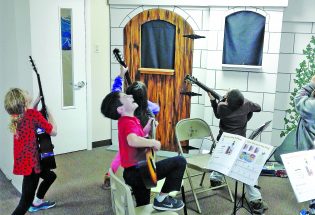
Want to learn an instrument? Head to ...
By Shelley Widhalm The Surveyor Elementary and middle school students can head to camp to...
- December, 14 2018

Town board meeting, Nov. 17
By Rudy Hemmann The Surveyor At a town board meeting held Tuesday, Nov. 27, 2018,...
- March, 29 2019
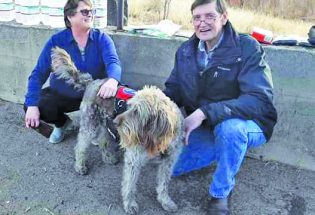
Operation Fetch delivers bags to home...
By Shelley Widhalm The Surveyor Hannah Vetorino of Berthoud needed a bunch of bags and...
- June, 24 2021
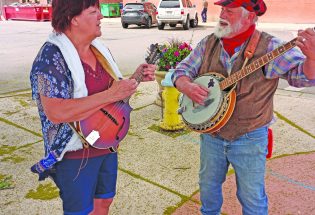
The Franks turn street corner into Tr...
Couresy photo - Steve and Erica Frank of the Town Troubadours...
- December, 13 2023

Spartan wrestlers start season with c...
Photo by Will CorneilusSophomore Sean Barajas fought a tough, grueling and...
- August, 05 2021

Thompson school board finalizes new d...
At a special meeting on Monday, Aug. 2, the Thompson School District (TSD) Board of...
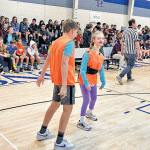
Unified basketball comes to Turner Middle School
Community News
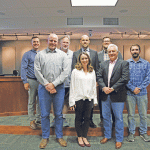
Mike Grace says goodbye as Brett Wing joins town board
Community News
POLICEBLOTTER
Community News
Northern Water sets C-BT quota at 70% for 2024
Community News

Emotions run high during Revere Property hearing
Community News
Snowpack at 119% above normal
Community News

Karspeck to serve third term as Berthoud mayor
Community News
COMMUNITY CALENDAR:
Community Calendar – add an event
Homestead Fine Art Gallery First Fridays OPEN HOUSE
03 May 4:00 PM - 7:00 PM
Homestead Fine Art Gallery First Fridays OPEN HOUSE
07 Jun 4:00 PM - 7:00 PM
Homestead Fine Art Gallery First Fridays OPEN HOUSE
05 Jul 4:00 PM - 7:00 PM
Homestead Fine Art Gallery First Fridays OPEN HOUSE
02 Aug 4:00 PM - 7:00 PM
Homestead Fine Art Gallery First Fridays OPEN HOUSE
06 Sep 4:00 PM - 7:00 PM
Homestead Fine Art Gallery First Fridays OPEN HOUSE
04 Oct 4:00 PM - 7:00 PM

